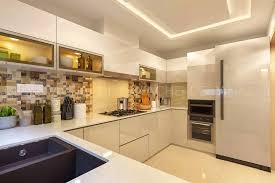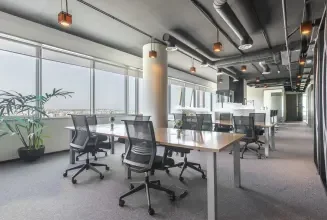In the world of interior design and woodworking, veneer sheets are a game-changer. Whether you’re building custom furniture, renovating cabinets, or upgrading your walls with a modern touch, veneer sheets offer an elegant, cost-effective, and sustainable solution. But what exactly are veneer sheets, and why are they so popular?
What Are Veneer Sheets?
Veneer sheets are thin slices of natural wood, typically less than 3mm thick, that are glued onto core panels like plywood, MDF, or particleboard. This gives the appearance of solid wood without the cost or weight associated with it. Veneers retain all the aesthetic qualities of real wood — grains, textures, and tones — while offering greater flexibility and efficiency in application.
Types of Veneer Sheets
-
Natural Veneers: Made from real wood logs, natural veneers showcase unique grain patterns and color variations. Common wood species used include teak, oak, walnut, maple, and mahogany.
-
Reconstituted Veneers: These are man-made veneers crafted from fast-growing trees and dyed to mimic the look of rare or exotic woods. They offer uniformity in pattern and are an eco-friendly alternative.
-
Backed Veneers: These come with a paper, cloth, or plastic backing to improve flexibility and ease of application, especially for curved or intricate surfaces.
Advantages of Using Veneer Sheets
✅ Cost-Effective: Achieve the premium look of solid wood at a fraction of the cost.
✅ Eco-Friendly: Veneers maximize the use of wood resources, reducing overall tree consumption.
✅ Design Variety: From rustic to modern, the design possibilities with different wood grains and stains are endless.
✅ Lightweight: Veneer-covered boards are lighter than solid wood, making them ideal for wall panels, ceilings, and furniture.
✅ Stable and Durable: When properly applied and finished, veneer sheets are resistant to warping and cracking.
Common Applications
-
Furniture: Tables, wardrobes, cabinets, and headboards.
-
Wall Paneling: Adds warmth and sophistication to living rooms, offices, and commercial spaces.
-
Doors: Enhances aesthetics without compromising on structural strength.
-
Ceilings & Decorative Elements: For a seamless wooden finish.
Installation & Maintenance Tips
-
Use high-quality adhesives for proper bonding.
-
Finish with sealants or polishes to protect the surface and enhance the wood’s appearance.
-
Avoid direct sunlight and excessive moisture to maintain longevity.
-
Clean with a soft, damp cloth and avoid harsh chemicals.
Why Veneer Over Solid Wood?
While solid wood has its charm, it comes with challenges like expansion, contraction, and higher cost. Veneer sheets provide a more stable, affordable, and flexible alternative, especially in modern interiors where both aesthetics and practicality matter.
Advantages of Using Veneer Sheets
✅ Cost-Effective: Achieve the premium look of solid wood at a fraction of the cost.
✅ Eco-Friendly: Veneers maximize the use of wood resources, reducing overall tree consumption.
✅ Design Variety: From rustic to modern, the design possibilities with different wood grains and stains are endless.
✅ Lightweight: Veneer-covered boards are lighter than solid wood, making them ideal for wall panels, ceilings, and furniture.
✅ Stable and Durable: When properly applied and finished, veneer sheets are resistant to warping and cracking.
Advantages of Using Veneer Sheets
✅ Cost-Effective: Achieve the premium look of solid wood at a fraction of the cost.
✅ Eco-Friendly: Veneers maximize the use of wood resources, reducing overall tree consumption.
✅ Design Variety: From rustic to modern, the design possibilities with different wood grains and stains are endless.
✅ Lightweight: Veneer-covered boards are lighter than solid wood, making them ideal for wall panels, ceilings, and furniture.
✅ Stable and Durable: When properly applied and finished, veneer sheets are resistant to warping and cracking.
Conclusion
Veneer sheets in jaipur are the unsung heroes of modern woodworking and interior design. They bring the timeless beauty of natural wood into spaces with less environmental impact, lower cost, and more creative freedom. Whether you’re a professional designer or a DIY enthusiast, veneers offer a stylish and sustainable solution to elevate your next project.
What Are Veneer Sheets?
Veneer sheets are thin slices of natural wood, typically less than 3mm thick, that are glued onto core panels like plywood, MDF, or particleboard. This gives the appearance of solid wood without the cost or weight associated with it. Veneers retain all the aesthetic qualities of real wood — grains, textures, and tones — while offering greater flexibility and efficiency in application.
Types of Veneer Sheets
-
Natural Veneers: Made from real wood logs, natural veneers showcase unique grain patterns and color variations. Common wood species used include teak, oak, walnut, maple, and mahogany.
-
Reconstituted Veneers: These are man-made veneers crafted from fast-growing trees and dyed to mimic the look of rare or exotic woods. They offer uniformity in pattern and are an eco-friendly alternative.
-
Backed Veneers: These come with a paper, cloth, or plastic backing to improve flexibility and ease of application, especially for curved or intricate surfaces.




